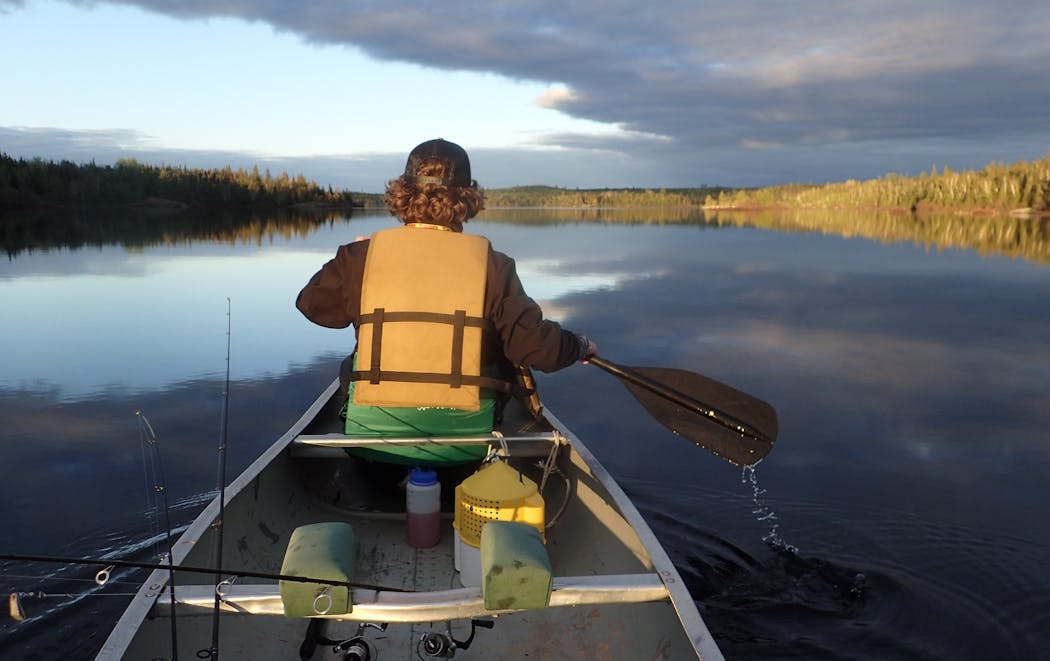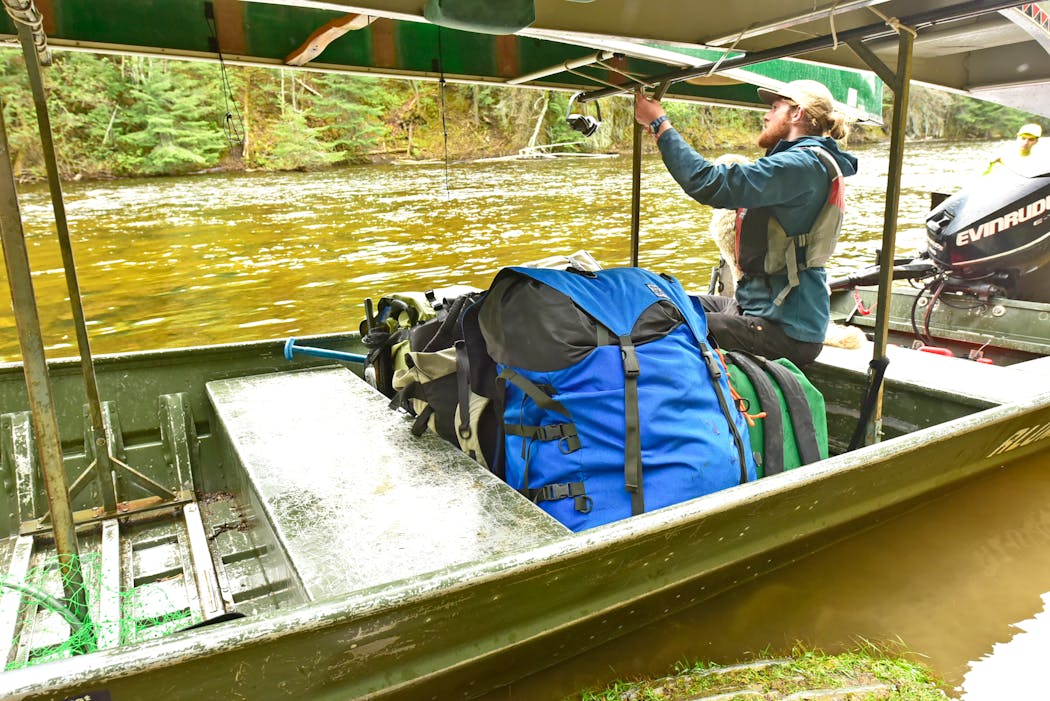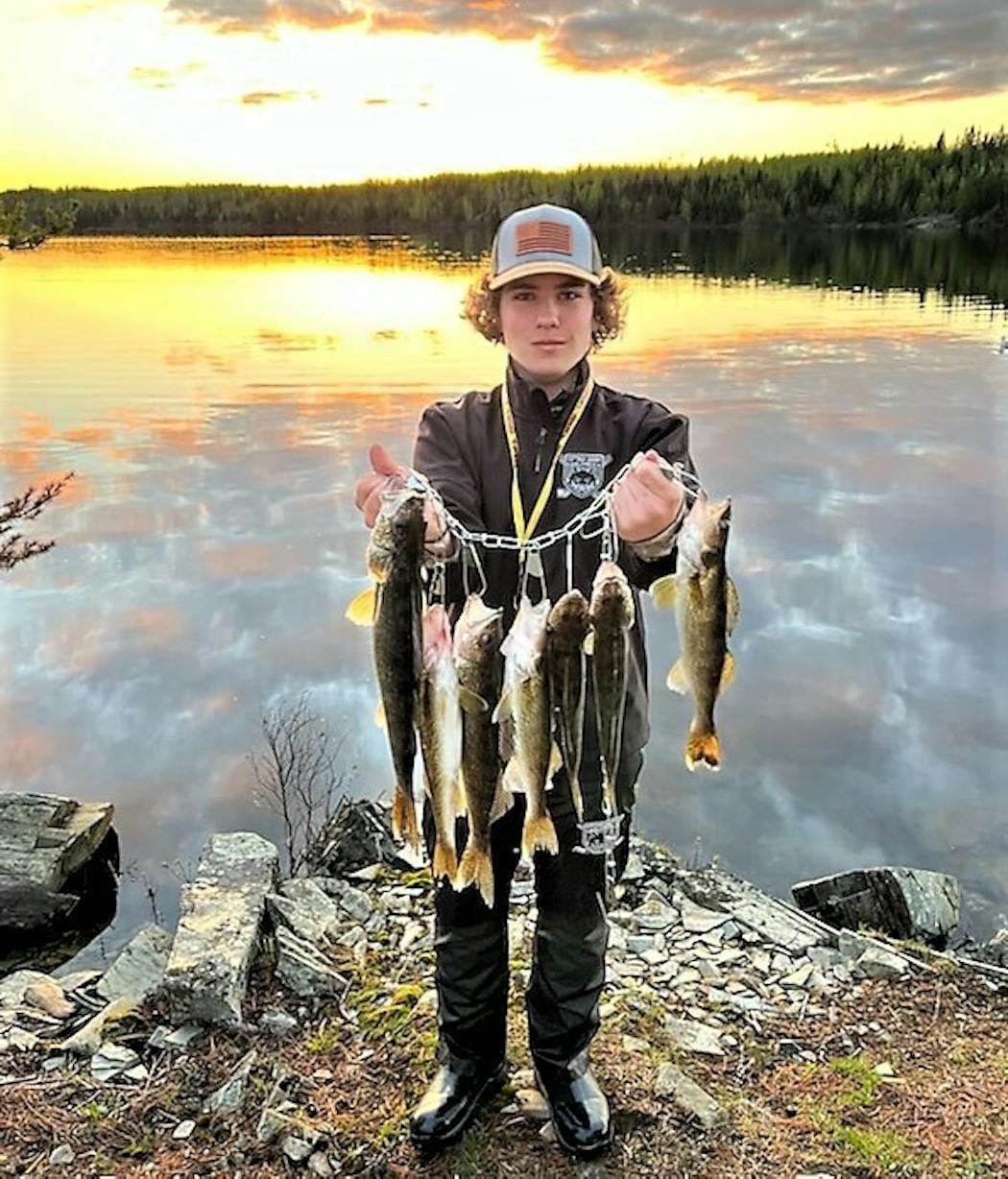IN THE BOUNDARY WATERS CANOE AREA WILDERNESS — Two men in a canoe paddled fiercely to steer away from the swollen headwaters of a dangerous set of rapids flowing out of Splash Lake.
With panic in their faces, they rammed into the shore — perpendicular to the rapids. Unable to hold the bank, the back end of the canoe swung into the flow. Within seconds, the backward vessel capsized on its way into big rocks. As camping gear spilled into the waves, one of the men went under. He popped up, gulped for air and lunged for the canoe. Somehow he grabbed it and pulled it to shore.
"Are you OK?'' I yelled. "Are you OK?''
One of the two paddlers gave a thumbs up. They were both cold and wet, but four other canoeists were in their group to help them recover and — presumably — restart their trip.
That was the scene at the outset of our own BWCA trek late last month to Ensign Lake, about 25 miles northeast of Ely. Our group consisted of my 15-year-old son, Joe; my brother Patrick; nephew Colin Burris; and brother-in-law Greg Powers, who was solo in a mahogany plywood canoe he built at home years ago.
We chose Ensign Lake for our four-day trip because of its reputation as a good, early-season fishing location with ample campsites. More importantly, I wanted Joe to experience hitching a ride into the wilderness on a towboat. As part of pending litigation from an environmental group that alleges overuse of the motorized jon boats, the U.S. Forest Service is in the process of deciding their future.
Motors and wilderness
"We're looking at motorized use pretty hard,'' said Connie Cummins, supervisor of the Superior National Forest. "We know with towboats there is a lot of interest in how we manage them and where we go from here.''
The timeline of the review and eventual decision is uncertain. But sometime next spring, the Forest Service plans to start a "pre-scoping'' exercise to gather feedback from stakeholders and the public. From there, the agency will produce a draft proposal on future towboat service. After feedback is received on the draft, the Forest Service will settle on a formal proposal that could possibly cut towboat availability.
"From a wilderness standpoint, we don't think they are needed,'' said Kevin Proescholdt, conservation director for Wilderness Watch, the nonprofit group that filed the litigation.
His organization strives to maintain wilderness characteristics throughout the national wilderness preservation system.
In the BWCA, he said, towboat use was capped under the 1978 federal law that expanded the wilderness area beyond its original borders, which were established in 1964. The intent in 1978, Proescholdt said, was to phase out towboats after five years. The lawsuit seeks to reign in their use, alleging the Forest Service allowed towboats to expand beyond statutory limits.
The legal case already has produced a settlement agreement under which the Forest Service completed a needs assessment on all kinds of commercial services in the BWCA and the remainder of the Superior National Forest. The assessment was to determine whether commercial services are necessary, and if so, to what extent. The need for towboat services was listed as "moderate.''
"The lawsuit isn't finished,'' Proescholdt said. "It's only on hold.''
Saving strokes
Superior National Forest public services staff officer Susan Catton said towboat usage has been on the rise inside the BWCA. In 2012, before record keeping was rigorous, outfitters reported 2,550 annual trips. The number swelled to 3,643 in 2015 when reports became more accurate. Five years later, during the first year of COVID-19, towboat trips rose 6% to 3,865.
The service is available through 18 specially permitted outfitters on two rivers and 14 lakes. Prominent among those waters are Saganaga Lake, Seagull Lake, Lac La Croix, Crane Lake, Snowbank Lake, Clearwater Lake, South Farm Lake, Basswood Lake and the Moose Lake chain leading into Basswood, Birch and Ensign.
For the purposes of our own trip to Ensign, we eliminated about five hours of paddling through the Moose Lake chain by booking rides to and from the back country from Ely native Willy Vosburgh, a Moose Lake resort owner and BWCA outfitter who has been operating towboats inside the wilderness area for 17 years.
With an 8 a.m. departure from Willy's dock, we reasoned the tow would give us a better chance at nabbing an open campsite and grant us more time to fish on Day 1 — the Thursday before Memorial Day. After a 20-minute ride at a cost of $28 per paddler, we arrived at the portage trail into Splash.
The five of us, our packs and three canoes filled two towboats. High water at the entry landed us tight to the trail. In less than 10 minutes, we were carrying our gear to the canoe launch at the other end of the portage. Joe and I were the last to launch, hugging the north shoreline to avoid the rapids. We viewed the canoe accident from a distance of less than 100 yards — sighing with relief that both paddlers escaped serious injury.
Once on Ensign, we followed Willy's advice to look for a campsite along the south shore. The best ones were taken, but we found a site nearby — high and dry on the lake's big peninsula. Hewing to our time-sensitive plan, we were fishing by midafternoon.
Helping or hurting?
Inherent in the Forest Service analysis of BWCA towboats is the problem of overcrowding. Cummins said usage currently exceeds the wilderness standard for solitude or seclusion — an experience measured by encounters between groups. To address the issue, the agency last year reduced the availability of entry permits by 13%.
In deciding the fate of towboats, the agency will evaluate whether motorized assists add to encounters. Cummins said it's a complicated question because towboats also help to reduce encounters by taking visitors deeper into the boundary waters than they could otherwise manage during a short trip.
"I don't see how it could do anything but help,'' Vosburgh said of towboat rides.
If towboats were outlawed on the Moose Lake chain, he said, campsites on the route would be regularly jammed with paddlers on trips to and from lakes like Basswood, Knife, Birch and Ensign, he said.
"The towboats do a hell of a job of dispersing people,'' he said.
Deb Mark and Dave Truehart of Seagull Outfitters on the Gunflint Trail agree. They operate three towboat routes, helping people safely cross the big water on Saganaga Lake, a 25,000-acre waterway. Truehart said eliminating tows to distant entry points would effectively close those entry points and add to congestion on the BWCA's perimeter.
Shorter trips are the norm these days and most people don't have time to paddle all day in one direction, Mark said.
"It's just common sense,'' she said. "The wilderness is still the wilderness.''
But Proescholdt of Wilderness Watch said towboats have turned the Moose Lake chain, Saganaga and other BWCA travel routes into "wilderness sacrifice zones.''
"Moose Lake and Sag alone can offer great wilderness experiences,'' he said.
Walleyes were biting
Once we were fishing on Ensign Lake, other groups were still arriving or passing through the lake to other destinations. With the water high, Joe and I headed to a choke point between two islands to jig for walleyes in the flow. Three kayakers were already there, marking fish on their sonar screens.
"Got one,'' Joe said, only minutes after he first sank his lure to the bottom.
To the surprise of the friendly kayakers, the walleye was hefty by our own boundary waters standards: 17 inches. They had been enjoying a hot walleye bite, but most were smaller fish in the range of 10 to 12 inches.
We started a stringer and drifted here and there between the two shores. No matter where we floated, the fish would tug at our minnows. For several hours, we enjoyed a catch rate quite unlike the mediocre norm or nonexistent bite of BWCA trips in the recent past.
Joined by Colin and Patrick and blessed with enough keepers to fry for dinner on the following night, we caught and released walleyes under calm, fishing-friendly conditions until 9 p.m. The pleasantries and a good (not great) bite continued throughout the next day. Rain and high wind kept us stranded in camp on Saturday, but Sunday's weather bounced back and we enjoyed the luxury of fishing on the way home knowing our tow wouldn't arrive until 1 p.m.
"I haven't had fishing like this in the boundary waters for a very long time,'' I told Joe.
The consensus in our group was to return to the same area in 2023, with canoes mounted on the racks of a Willy Vosburgh towboat.

Gophers hope second bye week propels them even better than the first one did

RandBall: Officiating saved Vikings; game announcers helped nobody

Big Ten football power rankings: Where do Gophers sit entering final two weeks?

Podcast: Patrick Reusse on the charmed Vikings (and why he won't join Bluesky)





